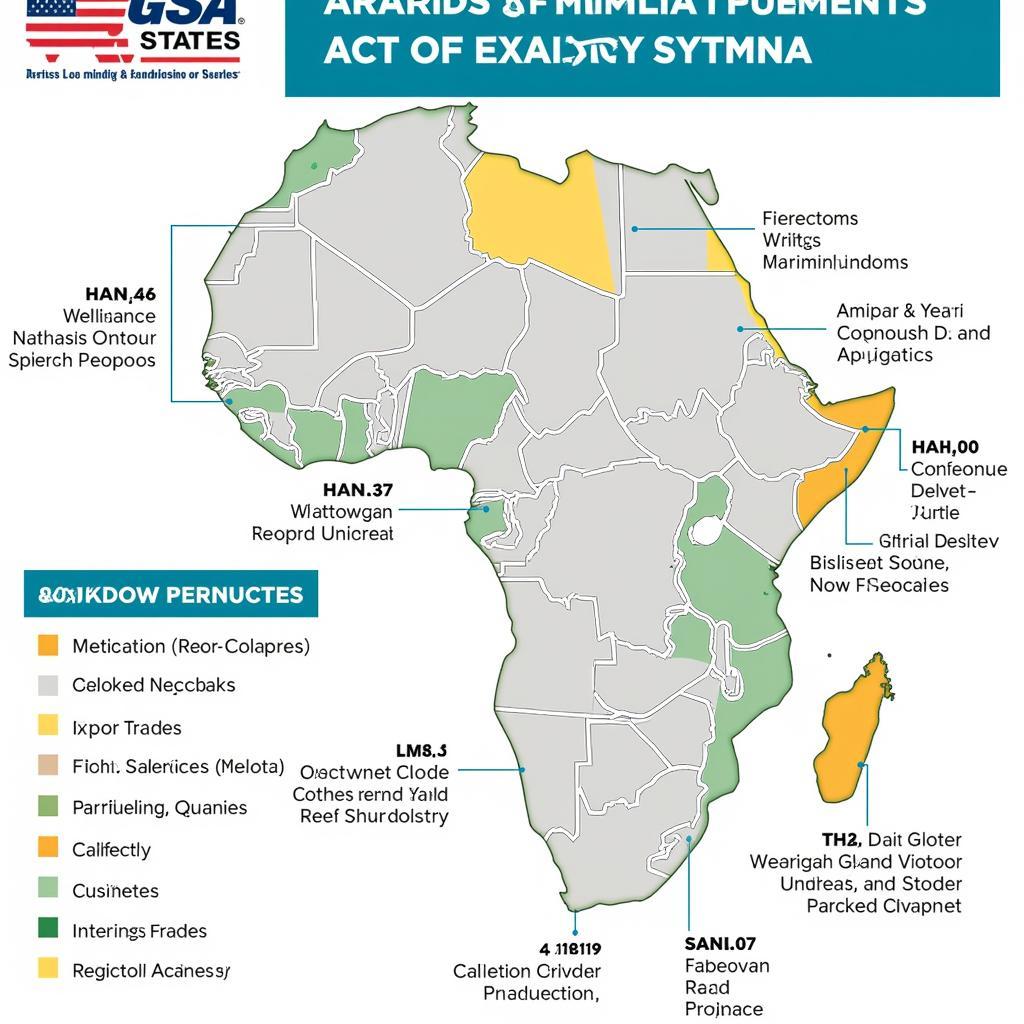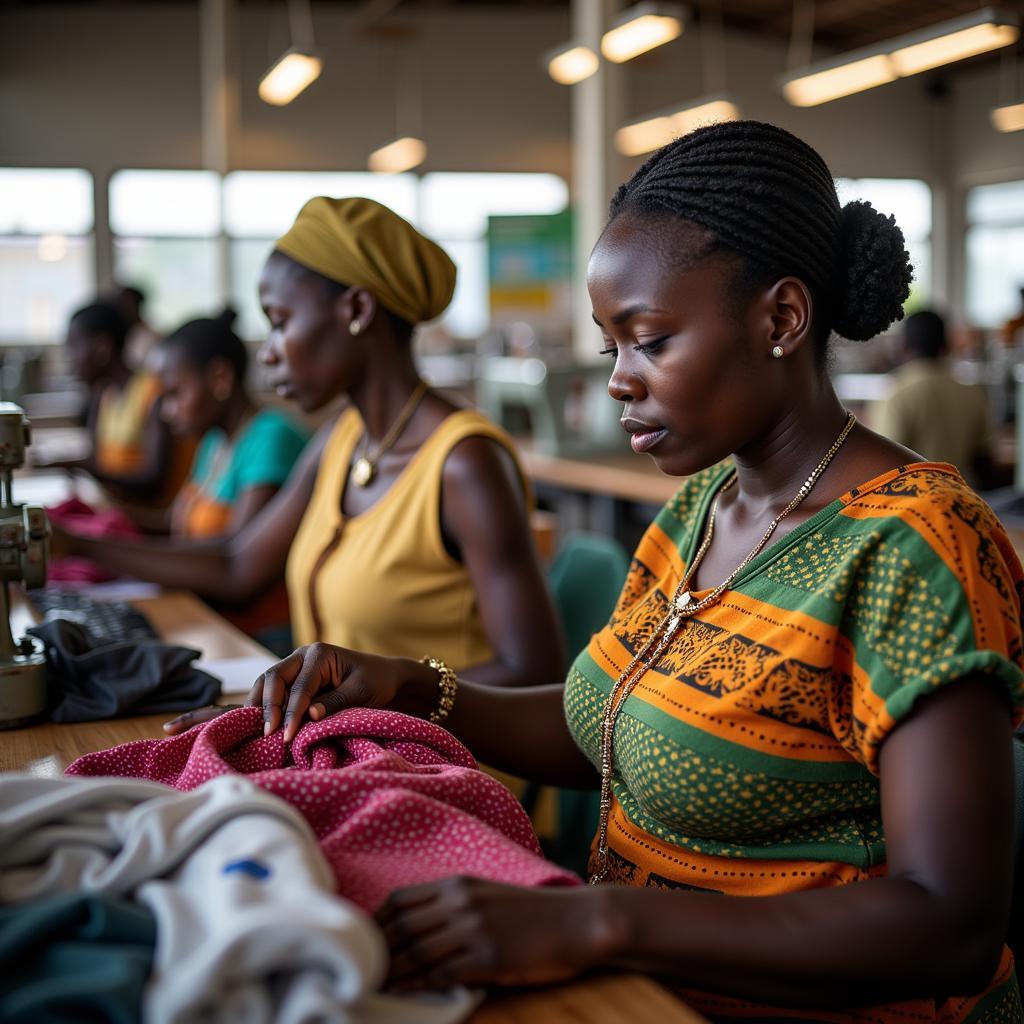Unlocking Africa’s Potential: The African Growth and Opportunity Act Explained
The African Growth And Opportunity Act (AGOA) stands as a beacon of trade preference for sub-Saharan African nations, aiming to bolster economic growth and development. Enacted in 2000, this multifaceted piece of legislation has sparked debate and analysis, prompting questions about its efficacy, impact, and future.
Understanding AGOA’s Core Objectives
At its heart, AGOA seeks to cultivate sustainable economic development in sub-Saharan Africa by providing eligible countries with duty-free access to the vast U.S. market for over 1,800 products. This preferential treatment goes beyond traditional trade agreements, encompassing a broader spectrum of sectors, from textiles and apparel to agricultural goods and manufactured products.
How AGOA Fosters Trade and Investment
 AGOA Trade Flows Between US and Africa
AGOA Trade Flows Between US and Africa
One of AGOA’s primary mechanisms for boosting trade is its duty-free access provision. By eliminating tariffs on a wide range of goods, AGOA incentivizes U.S. businesses to source products from eligible African countries. This, in turn, stimulates investment in those sectors, creating jobs, and fostering economic growth.
Beyond direct trade benefits, AGOA encourages investment in infrastructure, technology transfer, and human capital development. The act supports programs that enhance productivity, promote regional integration, and strengthen governance structures in participating African countries.
AGOA’s Impact: Successes and Challenges
Since its inception, AGOA has yielded tangible benefits for many sub-Saharan African nations. The act has facilitated increased exports to the U.S., particularly in sectors like apparel and textiles. This has led to job creation, particularly for women, and contributed to poverty reduction in some instances.
 AGOA's Impact on Employment in Textile Industry
AGOA's Impact on Employment in Textile Industry
However, AGOA’s impact has not been without its limitations. Critics argue that the act’s benefits have been unevenly distributed, with some countries capitalizing more effectively than others. Furthermore, concerns remain about AGOA’s overemphasis on raw material exports and its limited impact on diversifying African economies.
Looking Ahead: The Future of AGOA
As AGOA enters its third decade, questions surrounding its renewal and potential reforms take center stage. The act’s current iteration is set to expire in 2025, and discussions are underway regarding its future trajectory.
Advocates for AGOA’s renewal emphasize its continued relevance in promoting trade, investment, and development in Africa. They highlight the need for enhanced efforts to address the act’s shortcomings and ensure more equitable distribution of benefits among participating countries.
Conclusion: AGOA’s Enduring Significance
The African Growth and Opportunity Act represents a complex and multifaceted approach to fostering economic development in Africa. While its impact has been met with both praise and criticism, AGOA remains a crucial instrument in promoting trade, investment, and sustainable growth across the continent. As the act’s expiration date approaches, thoughtful deliberation and strategic reforms will be essential to maximizing its potential and ensuring a prosperous future for Africa.
FAQs about the African Growth and Opportunity Act (AGOA)
1. Which countries are eligible for AGOA benefits?
AGOA eligibility is extended to sub-Saharan African countries that meet specific criteria related to human rights, rule of law, and market-based economic policies. The list of eligible countries is reviewed annually by the U.S. president.
2. What are the key products covered under AGOA?
AGOA provides duty-free access to a wide range of products, including apparel and textiles, agricultural goods, manufactured products, minerals, and energy products.
3. How does AGOA promote investment in Africa?
By providing preferential market access, AGOA incentivizes U.S. companies to invest in production and sourcing from eligible African countries. The act also supports programs that improve the investment climate in Africa.
4. What are some of the criticisms leveled against AGOA?
Some critics argue that AGOA has not led to sufficient diversification of African economies, with many countries still relying heavily on raw material exports. Concerns also persist about the act’s uneven impact across different countries and sectors.
5. What is the future of AGOA beyond its current expiration date?
Discussions are underway regarding the renewal and potential reforms of AGOA beyond its current expiration in 2025. The future of the act will depend on various factors, including political will and the evolving trade landscape between the U.S. and Africa.
Need Assistance?
Contact us at:
Phone Number: +255768904061
Email: [email protected]
Or visit us at:
Mbarali DC Mawindi, Kangaga, Tanzania.
Our customer support team is available 24/7.

